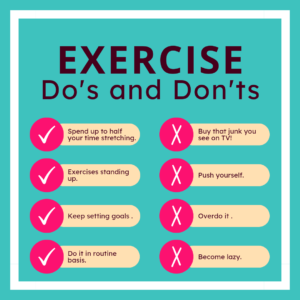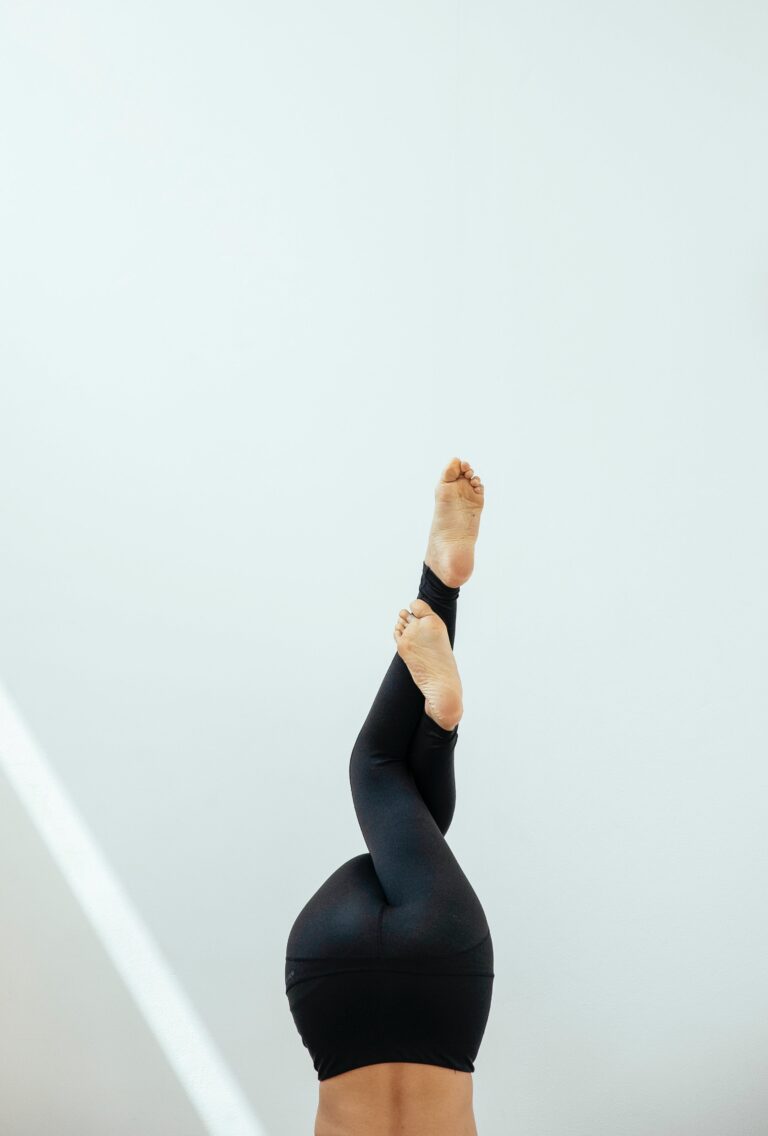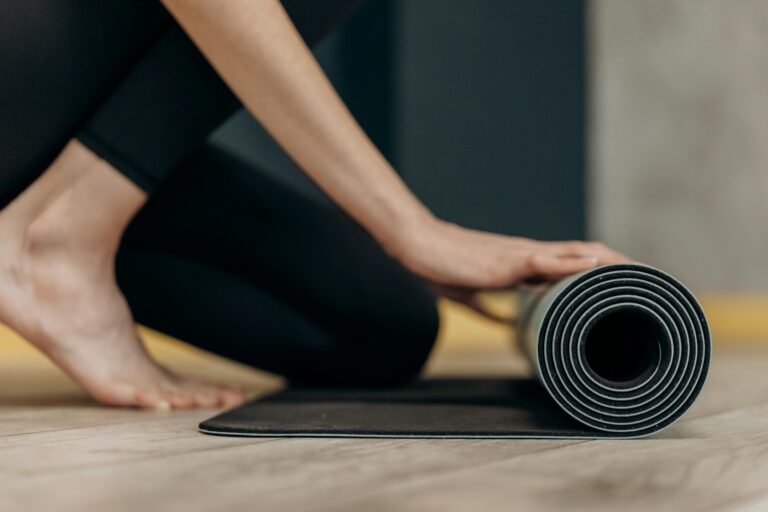Staying Fit: Top 5 Wellness Habits for a Healthy Lifestyle
Top 5 Wellness
Introduction
Maintaining a healthy lifestyle isn’t just about occasional bursts of exercise or short-term diets; it’s a culmination of consistent wellness habits that create a foundation for vitality and well-being. The top five wellness habits encapsulate a holistic approach to health, encompassing physical, mental, and emotional well-being. By integrating these habits into daily life, individuals can foster resilience, boost energy levels, and attain a sense of balance that promotes a healthier, more fulfilling life. These habits, when practiced consistently, form the cornerstone of a sustainable and vibrant approach to overall wellness.
Understanding the Importance of Regular Exercise

Regular exercise plays a pivotal role in maintaining overall health and well-being. Its importance extends far beyond weight management and physical fitness. Engaging in regular physical activity brings forth a multitude of benefits that positively impact various aspects of life.
- Physical Health: Exercise helps in managing weight, reducing the risk of chronic diseases such as heart disease, type 2 diabetes, and certain cancers. It strengthens muscles, bones, and the cardiovascular system, enhancing overall physical endurance and resilience.
- Mental Health: Physical activity stimulates the release of endorphins, neurotransmitters responsible for feelings of happiness and well-being. Regular exercise aids in reducing stress, anxiety, and depression while improving mood and promoting better sleep patterns.
- Cognitive Function: Studies show that exercise contributes to enhanced cognitive function and memory. It fosters brain health by promoting the growth of new brain cells and improving overall brain performance.
- Increased Energy Levels: Contrary to common belief, engaging in physical activity can boost energy levels. Regular exercise improves cardiovascular fitness, allowing the heart and lungs to work more efficiently, resulting in increased stamina and reduced fatigue.
- Longevity and Quality of Life: Incorporating regular exercise into one’s routine has been linked to a longer lifespan. It not only adds years to life but also improves the quality of those years by reducing the risk of chronic diseases and enhancing overall physical and mental well-being.
Understanding the significance of regular exercise underscores its role as a fundamental pillar of a healthy lifestyle. Whether it’s through cardiovascular workouts, strength training, yoga, or simply staying active, finding enjoyable ways to incorporate regular physical activity into daily life is key to reaping these numerous benefits.
Why Choose Home Workout
Choosing home workouts offers numerous advantages, making them a compelling option for many individuals seeking to maintain a consistent fitness routine. Here are several reasons why home workouts can be a beneficial choice:
- Convenience: Home workouts eliminate the need to travel to a gym or fitness center. You can exercise anytime, fitting workouts into your schedule without the time constraints of commuting or adhering to gym hours.
- Cost-Effective: Gym memberships, travel expenses, and other associated costs can add up. Home workouts require minimal to no investment in equipment or membership fees, offering a cost-effective alternative.
- Comfort and Privacy: Exercising at home provides a level of privacy and comfort that might not be achievable in a public gym setting. You have the freedom to wear what you want, listen to your favorite music, and work out in a space that feels comfortable to you.
- Flexibility and Variety: Home workouts allow for flexibility in choosing exercise routines that suit your preferences and goals. Whether it’s yoga, HIIT, strength training, or dance workouts, there’s an abundance of online resources offering various workouts, providing a wide range of options to keep your routine fresh and engaging.
- Family Involvement: Working out at home creates opportunities for family members to join in, promoting a healthy lifestyle collectively. It can become a bonding activity, especially for parents with young children, encouraging them to participate in physical activities together.
- Adaptability: Home workouts can be easily modified to accommodate different fitness levels, available space, and equipment. You have the freedom to tailor exercises to your specific needs and gradually increase intensity as you progress.
- Consistency: With fewer barriers to entry, such as travel time or busy gym hours, home workouts can facilitate greater consistency in sticking to a regular exercise routine. This consistency is key to seeing progress and reaping the benefits of exercise.
The convenience, cost-effectiveness, privacy, and adaptability of home workouts make them an appealing choice for many individuals looking to prioritize fitness within the comfort of their own space. Additionally, advancements in technology have made accessing professional guidance and workout routines easier than ever through online platforms, further enhancing the appeal of home workouts.
The 10-Minute Daily Exercise Routine

A 10-minute daily exercise routine can be a highly effective way to incorporate physical activity into a busy schedule. Short workouts, when done consistently, can yield significant health benefits. Here’s a versatile 10-minute exercise routine that targets various muscle groups and promotes overall fitness:
- Warm-up (2 minutes):
- Start with a two-minute warm-up to prepare your body for exercise. Perform light aerobic movements such as marching in place, arm circles, or gentle jumping jacks to gradually elevate your heart rate.
- Bodyweight Exercises (6 minutes): Perform each exercise for 1 minute, aiming for as many repetitions as comfortably possible with good form. Take a 15-second rest between exercises if needed.a. Squats: Stand with feet shoulder-width apart, lower your body by bending your knees and hips, keeping your back straight. Return to the standing position.b. Push-ups or Modified Push-ups: Perform standard push-ups or modify by doing knee push-ups or against a wall, focusing on engaging your chest, shoulders, and triceps.
c. Plank: Get into a plank position with forearms on the ground and your body forming a straight line from head to heels. Hold this position, engaging your core muscles.
d. Lunges: Step forward with one leg, lowering your hips until both knees are bent at a 90-degree angle. Return to the starting position and alternate legs.
- Cool-down and Stretching (2 minutes): Take the last two minutes to cool down and stretch your muscles. Perform gentle stretches targeting the major muscle groups used in the workout, holding each stretch for 15-30 seconds without bouncing.
Remember, the key to maximizing the effectiveness of a short workout is to focus on intensity and proper form. Adjust the number of repetitions or modify exercises based on your fitness level. Additionally, listen to your body and consult a fitness professional before starting any new exercise routine, especially if you have any health concerns or conditions. Even a brief 10-minute workout, when done consistently, can contribute to improved strength, endurance, and overall well-being.
Making the Most Out of Your Home Workouts

Making the most out of your home workouts involves a combination of planning, variety, consistency, and focus. Here are several tips to maximize the effectiveness of your home exercise sessions:
- Set Clear Goals: Define your fitness objectives, whether it’s improving strength, flexibility, endurance, or overall health. Having specific goals will help you tailor your workouts accordingly and track your progress.
- Create a Dedicated Space: Designate an area in your home for exercising. Clear enough space to move freely and store any equipment you might use. Having a dedicated workout space can help mentally prepare you for exercise.
- Schedule Your Workouts: Treat your home workouts as appointments. Set specific times in your daily or weekly schedule for exercise, just as you would for any other important activity. Consistency is key to seeing results.
- Mix Up Your Routine: Avoid monotony by incorporating different types of workouts. Combine cardio, strength training, flexibility exercises, and even try new workout styles or online classes. Variety not only prevents boredom but also challenges your body in different ways.
- Use Online Resources: Take advantage of the abundance of online workout videos and apps available. They offer structured workouts led by fitness professionals, catering to various fitness levels and interests. Whether it’s yoga, HIIT, dance workouts, or specialized programs, you’ll find plenty of options.
- Set Realistic Expectations: Understand that progress takes time. Don’t get discouraged if you don’t see immediate results. Celebrate small victories along the way, whether it’s lifting slightly heavier weights or improving endurance during cardio workouts.
- Stay Hydrated and Eat Well: Proper nutrition and hydration are crucial for effective workouts. Fuel your body with balanced meals and stay hydrated before, during, and after exercise to optimize performance and recovery.
- Listen to Your Body: Pay attention to how your body feels during and after workouts. Don’t push yourself too hard to the point of injury. Rest when needed and prioritize recovery to prevent burnout.
- Track Your Progress: Keep a workout journal or use fitness apps to track your workouts, progress, and how you feel. This can help you stay motivated and make adjustments to your routine as needed.
- Stay Motivated: Find what motivates you, whether it’s setting rewards for reaching milestones, exercising with a friend virtually, or participating in fitness challenges. Keeping your motivation high will help you stay committed to your home workout routine.
By implementing these strategies, you can make your home workouts more effective, enjoyable, and sustainable, ultimately helping you achieve your fitness goals.
How to Stay Motivated to Exercise at Home
Staying motivated to exercise at home can sometimes be challenging due to the lack of external structure and distractions. However, several strategies can help you maintain motivation and consistency with your home workouts:
- Set Clear and Achievable Goals: Define specific, realistic, and measurable fitness goals. Whether it’s improving strength, losing weight, or mastering a new exercise, having clear objectives will keep you focused and motivated.
- Create a Routine: Establish a consistent workout schedule. Designate specific times for exercise each day or week and treat them as non-negotiable appointments. Consistency helps form habits and makes it easier to stick to your routine.
- Find Activities You Enjoy: Choose workouts or activities that you genuinely like. Whether it’s yoga, dance, HIIT, or strength training, doing something you enjoy increases the likelihood of sticking with it long-term.
- Switch Up Your Workouts: Prevent boredom by incorporating variety into your routine. Try different exercises, workout styles, or online classes to keep things interesting and challenge your body in new ways.
- Set Up a Dedicated Space: Create a designated workout area at home. Having a space dedicated to exercise helps mentally prepare you for workouts and minimizes distractions.
- Use Technology and Apps: Take advantage of fitness apps, online workout videos, or virtual fitness communities for guidance, motivation, and structure in your workouts.
- Workout with a Friend or Virtually: Exercise with a friend virtually or join online fitness communities for accountability and support. Sharing your fitness journey with others can provide encouragement and motivation.
- Track Your Progress: Keep a workout journal, use fitness apps, or take progress photos to track your improvements. Celebrate your achievements, no matter how small, to stay motivated.
- Reward Yourself: Set up rewards for reaching milestones or sticking to your workout routine consistently. Rewards can be anything that motivates you, such as treating yourself to something you enjoy or a relaxing activity.
- Stay Positive and Be Kind to Yourself: Recognize that motivation might fluctuate at times. Don’t be too hard on yourself if you miss a workout or experience setbacks. Focus on progress, not perfection, and practice self-compassion.
- Find Your Why: Remind yourself of the reasons why you started exercising. Whether it’s for health, stress relief, or personal goals, reconnecting with your purpose can reignite motivation.
By implementing these strategies and finding what works best for you, you can overcome challenges and maintain motivation to exercise regularly at home.
Safety Measures While Exercising at Home
Exercising at home is a convenient and effective way to stay fit, but it’s crucial to prioritize safety to prevent injuries. Here are some safety measures to consider while exercising at home:
- Consult with a Healthcare Professional: Before starting any new exercise routine, especially if you have pre-existing health conditions or concerns, consult with a healthcare professional or a fitness expert to ensure the chosen activities are safe for you.
- Warm-Up and Cool Down: Always begin your workouts with a proper warm-up to prepare your body for exercise. Perform dynamic movements to gradually increase your heart rate and loosen muscles. Likewise, end your workouts with a cooldown period and stretches to help your body recover and prevent injury.
- Proper Form and Technique: Focus on maintaining proper form and technique during exercises. Incorrect form can lead to injuries. If you’re unsure about the correct posture or technique, consider seeking guidance from fitness professionals or using online resources with instructional videos.
- Use Appropriate Equipment: If you use exercise equipment at home, ensure it’s in good condition and appropriate for your fitness level. Inspect equipment regularly to avoid accidents or malfunctions.
- Start Slow and Progress Gradually: If you’re new to exercise or trying a new routine, start slowly and progress gradually. Avoid overexertion and listen to your body’s signals. Increase intensity, duration, or weights incrementally over time as your fitness improves.
- Stay Hydrated: Drink water before, during, and after your workout sessions to stay hydrated. Dehydration can impact performance and recovery.
- Pay Attention to Surroundings: Ensure your workout area is free of obstacles or hazards that could cause tripping or falling. Keep the space well-lit and ventilated.
- Know Your Limits: Pushing yourself is essential for progress, but it’s equally important to recognize your limits and avoid pushing beyond what your body can safely handle. Respect your body’s signals and rest when needed.
- Modify Exercises as Needed: If you have injuries or physical limitations, modify exercises to suit your capabilities. There are often alternative movements that can be done to work around injuries or limitations.
- Listen to Your Body: If you experience pain, dizziness, or unusual discomfort during exercise, stop immediately and seek guidance. Ignoring signs of potential injury can worsen the situation.
Prioritizing safety during home workouts is essential for long-term fitness and well-being. By being mindful of these safety measures, you can create a safer environment and reduce the risk of injuries while exercising at home.
Incorporating Exercise into Your Daily Routine
Incorporating exercise into your daily routine is a fantastic way to ensure regular physical activity without disrupting your schedule significantly. Here are effective strategies to seamlessly integrate exercise into your daily life:
- Schedule Workout Time: Treat exercise as an essential part of your day. Set aside specific times dedicated to exercise on your daily schedule, making it a priority rather than an option.
- Morning Exercise: Starting your day with exercise can boost energy levels, metabolism, and mental clarity. Wake up a bit earlier to fit in a quick workout, whether it’s a brisk walk, yoga session, or a short HIIT routine.
- Lunch Break Workouts: Use your lunch break for a quick workout. It could be a walk outside, bodyweight exercises, or a short fitness class. Utilize this time to refresh and re-energize for the rest of the day.
- Active Commuting: Whenever possible, opt for active transportation methods such as walking, cycling, or using stairs instead of elevators. This helps incorporate physical activity into your daily routine without specific workout sessions.
- Make It a Habit: Consistency is key. Aim to exercise at the same time each day to develop a routine that becomes a habit.
- Incorporate Movement Breaks: Incorporate short bursts of activity throughout your day. Stand up and stretch every hour, take walking breaks during work, or do a few minutes of jumping jacks or squats to break up long periods of sitting.
- Multitask with Exercise: Combine exercise with activities you enjoy or need to do. Listen to podcasts or audiobooks while walking or cycling, watch TV shows during stationary bike sessions, or involve your kids in active play.
- Family or Group Workouts: Engage your family or friends in workouts. Not only does it promote bonding, but it also keeps everyone motivated and accountable.
- Set Realistic Goals: Start with manageable goals that fit your lifestyle. Gradually increase the intensity or duration of your workouts as you progress.
- Be Flexible: Understand that some days might be busier than others. Be flexible with your exercise routine and adjust accordingly without feeling guilty.
- Track Your Progress: Keep a record of your workouts or use fitness apps to track your progress. Seeing improvements can be motivating and help you stay on track.
- Enjoy the Process: Find activities you genuinely enjoy. If you like what you’re doing, you’re more likely to stick with it long-term.
By integrating these strategies into your daily routine, you can make exercise a natural and consistent part of your life, reaping the numerous health benefits without it feeling like an additional chore.
Conclusion
In conclusion, integrating exercise into your daily routine offers a multitude of benefits for your physical, mental, and emotional well-being. By adopting a proactive approach and incorporating fitness seamlessly into your everyday life, you’re not only enhancing your health but also establishing a sustainable foundation for long-term wellness.
Regular physical activity, whether through dedicated workout sessions or simply by increasing daily movement, plays a vital role in maintaining overall health. From boosting energy levels and improving mood to reducing the risk of chronic diseases, exercise positively impacts various aspects of life.
Creating a consistent exercise routine doesn’t necessarily require drastic changes to your schedule. Small adjustments, such as morning workouts, active commuting, or incorporating movement breaks, can significantly contribute to your overall fitness. Flexibility, consistency, and enjoyment are key elements in making exercise a habitual part of your life.
Remember, it’s essential to prioritize safety, set achievable goals, and stay motivated throughout your fitness journey. Whether it’s finding activities you love, involving friends and family, or tracking your progress, discovering what works best for you will help sustain your commitment to exercise over time.
Ultimately, by embracing the concept of incorporating exercise into your daily routine, you’re not just carving out time for fitness; you’re nurturing a healthier and more vibrant lifestyle, ensuring a stronger, happier, and more resilient you.







